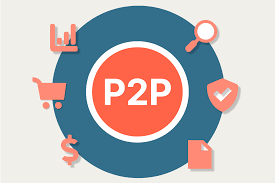What Is Procure to Pay Process? A Complete 2025 Guide

The success of any organization depends on its ability to manage resources efficiently, especially when it comes to procurement and financial transactions. That’s where understanding what is procure to pay process becomes crucial. As businesses grow more complex, integrating procurement and payment into a streamlined, end-to-end process is no longer a luxury—it’s a necessity. In this comprehensive blog, we’ll explain what is procure to pay process, break down its key steps, benefits, challenges, and share best practices to implement it effectively.
Understanding What Is Procure to Pay Process
What is procure to pay process? It refers to the complete cycle that begins when an organization identifies the need for goods or services and ends when the supplier receives payment. This process integrates the procurement and accounts payable departments into a single, cohesive workflow, often called P2P.The core aim of the procure to pay process is to enhance operational efficiency, reduce procurement-related errors, and ensure vendors are paid accurately and on time.
Why Knowing What Is Procure to Pay Process Matters
Understanding what is procure to pay process helps businesses:
- Control costs by reducing unauthorized purchases
- Improve vendor relationships through timely payments
- Enhance internal transparency and accountability
- Comply with financial regulations and audits
- Identify opportunities for automation and cost reduction
In short, businesses that master the P2P process enjoy smoother operations, fewer disruptions, and better financial health.
Key Steps in the Procure to Pay Process
To better grasp what is procure to pay process, here’s a detailed look at its main stages:
1. Purchase Requisition
The process starts when a department identifies the need for goods or services and submits a requisition. This internal document is reviewed and approved based on budget and necessity.
2. Purchase Order Creation
Once approved, a Purchase Order (PO) is generated and sent to the chosen supplier. The PO outlines the items, quantities, price, and terms of delivery.
3. Order Fulfillment and Delivery
The supplier receives the PO and delivers the requested goods or services. This is where supplier performance starts to play a key role in the P2P process.
4. Goods Receipt and Inspection
The receiving department checks the delivered goods for quality, quantity, and compliance with the PO. Any discrepancies are noted at this stage.
5. Invoice Processing
The supplier sends an invoice, which is matched with the PO and the goods receipt—a process known as three-way matching. This ensures that the organization only pays for what was ordered and received.
6. Payment Authorization and Execution
After the invoice is verified, it is forwarded to the finance team for approval and payment is processed based on pre-agreed terms (e.g., net 30 days).Each step is interconnected, forming the foundation of what is procure to pay process in a functional business model.
Common Challenges in the Procure to Pay Process
Even with a clear understanding of what is procure to pay process, businesses often face challenges such as:
- Manual paperwork and spreadsheets, which lead to errors
- Lack of communication between departments
- Delayed approvals that disrupt the procurement cycle
- Duplicate or fraudulent invoices
- Poor vendor data management
These challenges can result in late payments, overpayments, and strained supplier relationships.
How Automation Enhances the P2P Process
Now that you understand what is procure to pay process, it's important to consider automation. Using software platforms and ERP systems can eliminate many manual steps. Key automation benefits include:
- Automatic PO generation and tracking
- Real-time invoice matching and alerts
- Centralized vendor database
- Faster payment processing
- Real-time analytics and reporting
Automated P2P systems reduce costs, boost compliance, and speed up the entire procurement cycle.
Best Practices to Optimize Your Procure to Pay Workflow
To successfully implement what is procure to pay process, here are some actionable best practices:
- Establish clear policies for requisitions, approvals, and payments
- Train staff regularly on using P2P systems and protocols
- Centralize vendor data to maintain accuracy
- Integrate procurement with accounting software for real-time updates
- Monitor performance metrics like average PO cycle time, invoice processing time, and vendor reliability
These practices not only improve efficiency but also provide a strategic advantage in vendor management and cost control.
Conclusion: Why You Must Understand What Is Procure to Pay Process
To wrap up, what is procure to pay process is more than a back-office function—it's a critical driver of business efficiency and financial control. By integrating procurement with payment processing, businesses can reduce risks, save money, and create stronger vendor relationships. Whether you're a startup or a large enterprise, mastering the P2P process is essential in today’s digital and highly competitive environment.
FAQs: What Is Procure to Pay Process?
1. What is procure to pay process in simple words?
It is the full cycle from requesting goods/services to paying the supplier.
2. Is procure to pay the same as purchasing?
No, it includes purchasing plus payment and invoice handling.
3. What are the steps in the procure to pay process?
Requisition → Purchase Order → Receipt → Invoice → Payment.
4. Why is the procure to pay process important?
It controls spending, improves accuracy, and ensures vendor satisfaction.
5. What is three-way matching in P2P?
It matches the PO, goods receipt, and invoice before payment.
6. Can procure to pay process be automated?
Yes, using ERP or P2P software improves speed and reduces errors.
7. What is the role of finance in procure to pay?
Finance verifies invoices, manages payments, and ensures compliance.
8. How does P2P benefit vendors?
It provides transparency, on-time payments, and reliable communication.
9. What software helps manage procure to pay?
Popular tools include SAP Ariba, Coupa, Oracle, and Zoho.
10. What happens if the procure to pay process fails?
It may result in delayed payments, compliance issues, or supplier disputes.
